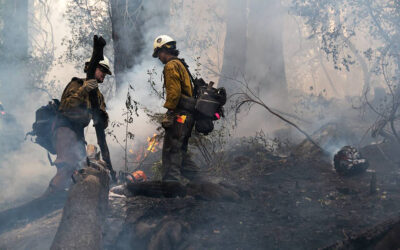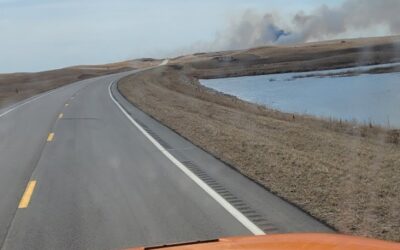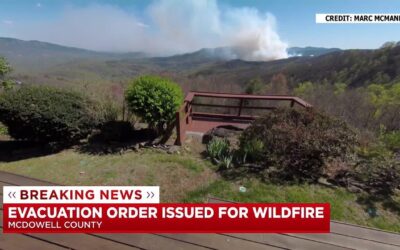Mar. 21—Residents living near where a wildland fire is burning or those in the vicinity of the smoke are told to stay indoors or leave the area altogether because of the contaminants the smoke is known to contain.
But what about the firefighters on or near the front lines fighting the fires? They are breathing in the smoke and usually without the full oxygen equipment a structural firefighter uses. What kind of damage could that smoke be doing?
That’s what So-Min Cheong, associate professor at the Bush School of Government and Public Service at Texas A&M, wants to know, specifically the effects on the heart. She is studying impacts of direct smoke inhalation on the firefighters engaged in battle with wildfires during spring and summer 2023 with the aid of wearable technology.
Cheong, along with the Texas A&M Forest Service and researchers from Stanford University School of Medicine, collected data from 56 firefighters each equipped with an Apple Watch and an air quality sensor.
The Apple Watch has a sensor that measures the user’s heart rate. The air quality sensor they carry measures the air surrounding the firefighter as they move around. Cheong wasn’t able to share conclusions from the data just yet, but the idea is to correlate the firefighter’s heart rate during times of the most intense smoke and times when the person may be resting away from the smoke.
Cheong said the lungs have been studied a lot in conjunction with wildfire smoke and health, but not the heart.
“I’m looking for the impact of the smoke exposure on the heart of the firefighters,” Cheong said. “Usually firefighters are fit; however, cardiovascular conditions can be diverse, depending on the individual’s health status … and then when you’re exposed to smoke it would amplify these pre-existing health conditions.”
She said the study is unlike others in that it is a “fine-grained, detailed measurement. Usually they check firefighters into the hospitals and see their condition or they get a blood sample, so this one is one of the first studies that measures with wearable sensors, like the smart watches and portable air quality sensor that they carry on their backpack or belt or pants.”
Cheong said wildfire smoke from wood contains some of the same dangerous chemicals as cigarette smoke, which can cause respiratory and cardiovascular symptoms within an hour.
Although it is recommended that wildland firefighters wear face masks, they often don’t because the mask makes it difficult to breathe. And wildland firefighters often spend days or weeks fighting the fires, which not only causes physical effects but mental difficulties as well. Cheong said the physical stress leads to mental stress. But it’s just one more layer.
“Because of the longer shifts and less resting time, and travel away from their families, all these contribute to mental stress,” she said.
She and local professionals hope that when her study findings are published later this summer, they will shed some light on the dangers of fighting wildland fires and what to do about them.
“The information collected during this study will contribute to the greater understanding of the impacts of smoke exposure on wildland firefighters and will assist in tailoring preventative safety measures for wildland fire service,” Texas A&M Forest Service Chief Wes Moorehead said in a statement. “With the safety of our firefighters being paramount to what we do every day, we hope to utilize the results from this study to advance our operations and safety procedures.”
___
(c)2024 Government Technology
Visit Government Technology at www.govtech.com
Distributed by Tribune Content Agency, LLC.




